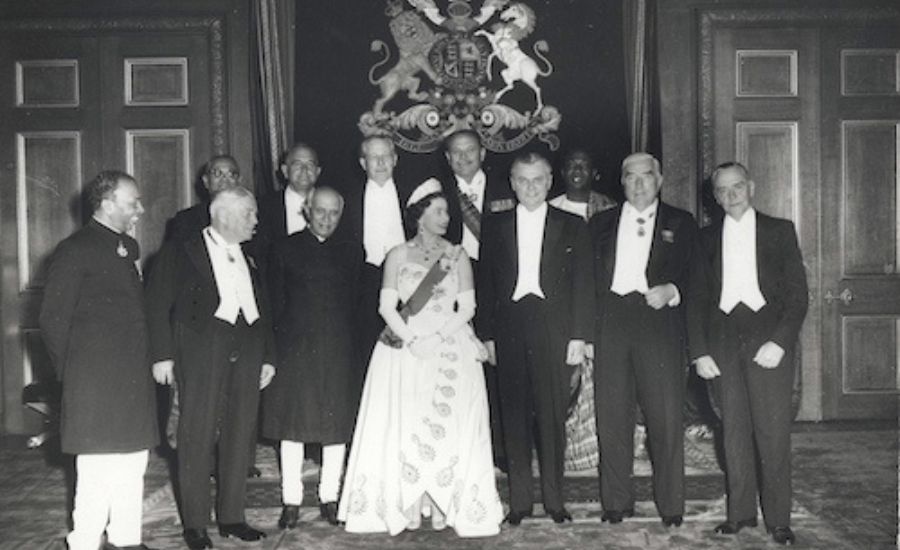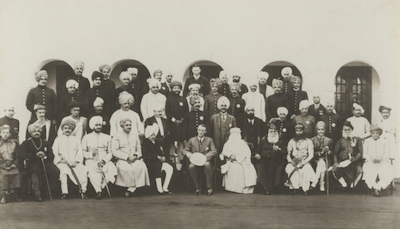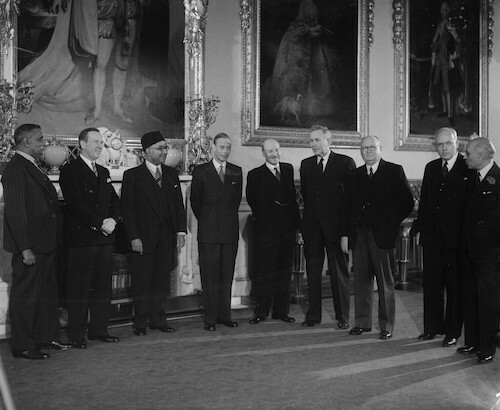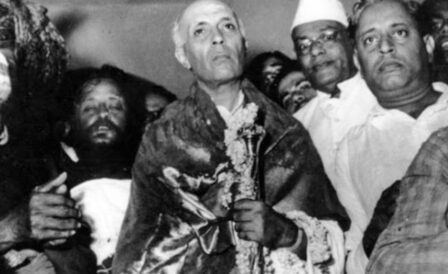
The recent passing away of Queen Elizabeth II has evoked emotional responses, commemorations and messages of condolence globally, but has also raised issues over the role of monarchy in a modern democratic setup. Our Constitution makers too had to engage with these issues, mainly along two dimensions: the future of the monarchical Princely States and the decision to join the Commonwealth.
The Objectives Resolution introduced on 13th December 1946 explicitly mentioned that ‘all power and authority of the Sovereign Independent India, its constituent parts and organs of government, are derived from the people‘. While introducing it, Jawaharlal Nehru made it clear that monarchy is not in consonance with this objective of a sovereign Indian republic. The entire Assembly was in agreement on this objective, so the question of continuing India’s relationship with the British Crown never came up.
But while India was to be a republic with a presidential head of state, there were several hundred Princely States within its territories that functioned under a monarchical setup. Under the Cabinet Mission Plan, these States had been given considerable autonomy to decide their future form of government in a federal setup. This included the possibility of a monarchy within a larger Indian republic.

In the absence of the representatives of the Indian princes, who had not joined the Constituent Assembly yet, concerns were raised by members such as Syamanandan Sahaya over the wording of a part of a Resolution. Some of the Princely States which would have liked to continue in a monarchical setup preferred that power and authority be vested with ‘the sovereign’, rather than the people. These concerns were pacified by the Assembly, assuring the rulers that they would have the autonomy to decide on the form of government. It was accompanied by suggestions to make the transition to a constitutional monarchy guided by a responsible government as soon as possible, to fulfill the democratic aspirations of the people.
Once independence and partition were implemented, the changed situation called for more aggressive attempts to integrate the Princely States in a uniformly democratic Indian republic. Even though the lapse of paramountcy gave the States the authority to decide on their political future, the Indian political leadership was keen on their full integration. Thus soon after independence, N. Gopalaswamy Ayyangar asserted that responsible governments in the States are a given, even if under a constitutional monarchical system. By November 1948, Dr. Ambedkar was able to frankly urge the remaining few States not yet fully integrated to “save themselves the bother of starting their own Constituent Assemblies“. Ultimately, all the States had to accede to the Indian Union fully under a republican system.

Another complicated question was the decision to join the Commonwealth of Nations as an independent, sovereign nation. Nehru introduced and supported this motion for pragmatic reasons, arguing that the King and Crown would only have a symbolic role. There were others who remained unconvinced, fearing that it would adversely affect India’s non-aligned stance and implicate it in the still continuing imperial project of the West. H.V. Kamath expressed distrust in Britain’s intentions in seeking to continue this body, and whether it would be practical for such a diverse group of nations to reach consensus. The final decision however, went Nehru’s way and India became the first republic nation-state in the Commonwealth.
In 2021 Barbados followed India’s example and severed constitutional ties with the Crown to become a republic. But like India, they continue to be a member of the Commonwealth. Other countries in the Caribbean region such as Jamaica and Belize were already evaluating their relationship with the Crown. With the Queen’s passing, experts believe that this movement is likely to gain further momentum.
More blog posts

Founding of India’s Republic: Continuity or Departure from Civilisation?
26 January 2025 • By Vineeth Krishna
The Sengol ceremony during the new parliament's inauguration was an attempt to depict India's founding as a continuation of its civilizational heritage. Did the Founders perceive India's transformation in similar vein?
Founding of India’s Republic: Continuity or Departure from Civilisation?
25 January 2025 • By Vineeth Krishna
The Sengol ceremony during the new parliament's inauguration was an attempt to depict India's founding as a continuation of its civilizational heritage. Did the Founders perceive India's transformation in similar vein?
